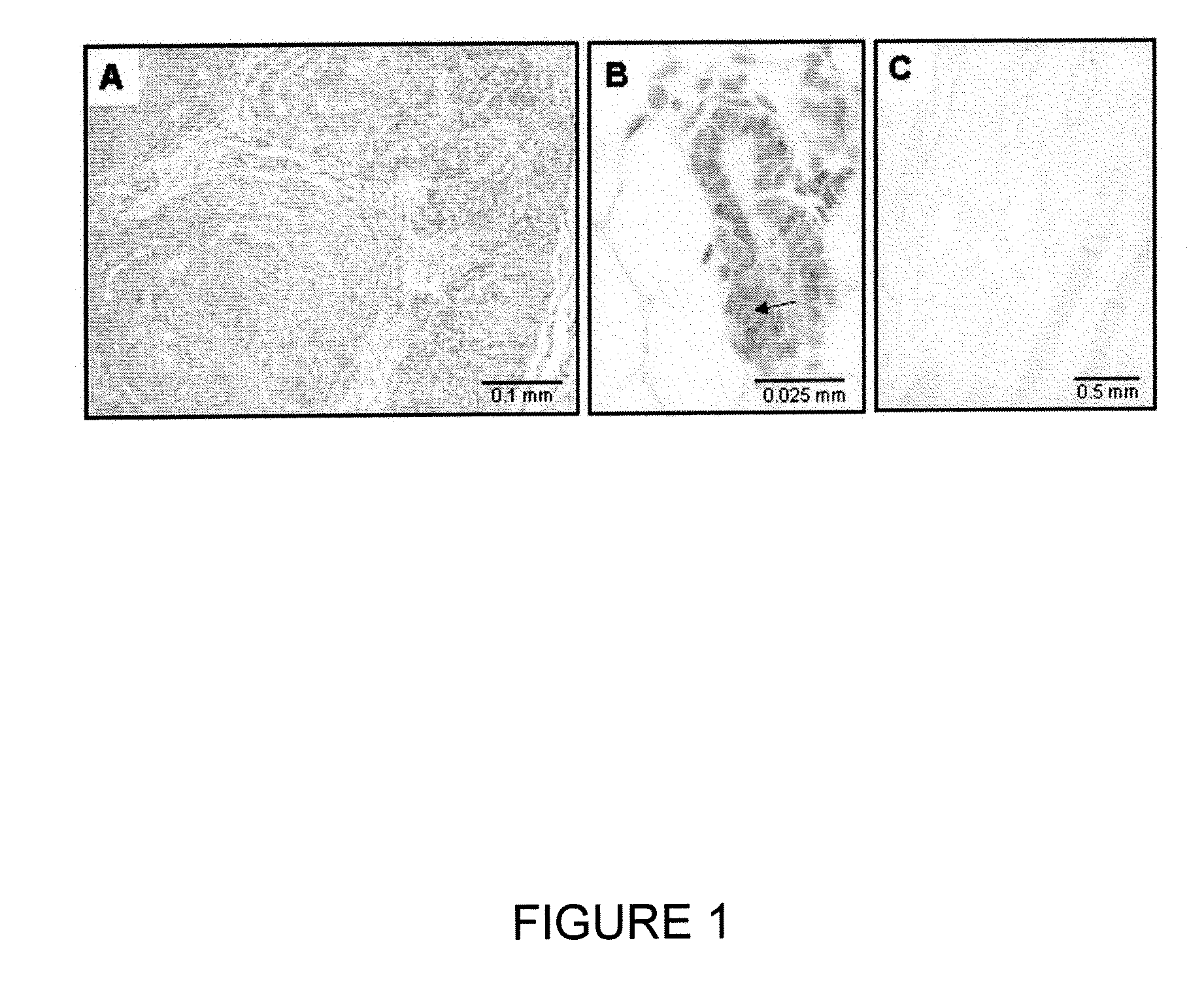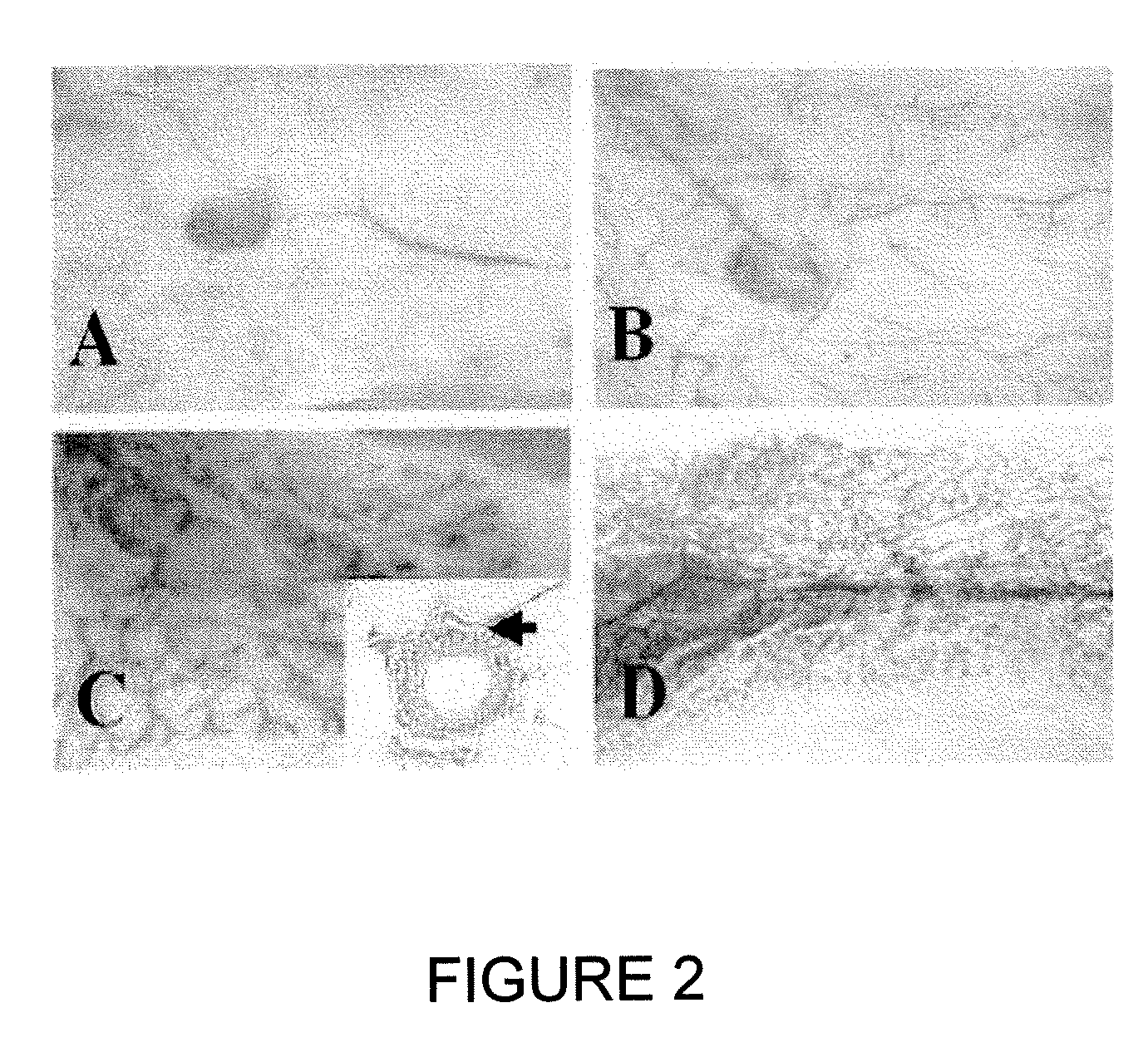Low-density lipoprotein receptor 6 (LRP6) as a mammary stem cell marker and related methods
a low-density lipoprotein and stem cell technology, applied in the direction of immunoglobulins, peptides, drugs, etc., can solve the problems of insufficient signaling that regulates mammary stem cells, no single cell surface biomarker that allows substantial enrichment of somatic mammary stem cells, and insufficient target gene activation
- Summary
- Abstract
- Description
- Claims
- Application Information
AI Technical Summary
Benefits of technology
Problems solved by technology
Method used
Image
Examples
example 1
The Wnt Signaling Receptor LRP6 is Required for Mammary Stem Cell Activity and Wnt1-Induced Tumorigenesis
[0145] Signaling by the Wnt family of secreted lipoproteins plays a central role in development and disease (1). At the cellular level, Wnt proteins regulate a broad range of functions including the self-renewal and differentiation of stem cells (2). Activation of the canonical Wnt cascade is initiated by the binding of Wnt proteins to cell surface receptors composed of a member of the Frizzled (Fzd) protein family and one of the low-density lipoprotein receptor-related proteins LRP5 or LRP6 (3, 4). Signaling from Wnt receptors increases cytoplasmic levels of β-catenin, which binds to transcription factors such as those of the LEF-1 / TCF family and modulates the transcription of specific target genes. While Wnt-Frizzled interactions may also be involved in non-canonical Wnt signaling events, the LRP5 / 6 moiety appears to be specifically required for the canonical pathway (5).
[014...
example 2
Method of Screening for LRP6-Specific Inhibitors
[0188] First, establish mouse embryonic fibroblasts (MEFs) from control mouse embryos (CONTROL) or from Lrp5-deficient (Lrp5− / −) embryos. These MEFs would also contain a reporter gene (Bat-Gal) that directs the expression of β-galactosidase under the control of a β-catenin-responsive promoter. Thus, β-catenin signaling activity could be measured by analyzing the level of β-galactosidase activity in lysates prepared from these cells. Next, expose CONTROL and Lrp5− / − MEFs to exogenously added Wnt ligands which are commercially available. After 4-12 hours, measure the amount of β-galactosidase activity in the lysates. Any activity noted in the Lrp5− / − lysates would be due to Wnt signaling through the LRP6 molecule. Then, screen for compounds that inhibit the ability of Wnt ligands to increase β-galactosidase activity in Lrp5− / − MEFs. Compounds identified in this screen would subsequently be used to test their ability to inhibit signaling...
PUM
| Property | Measurement | Unit |
|---|---|---|
| temperature | aaaaa | aaaaa |
| temperature | aaaaa | aaaaa |
| median time | aaaaa | aaaaa |
Abstract
Description
Claims
Application Information
 Login to View More
Login to View More - R&D
- Intellectual Property
- Life Sciences
- Materials
- Tech Scout
- Unparalleled Data Quality
- Higher Quality Content
- 60% Fewer Hallucinations
Browse by: Latest US Patents, China's latest patents, Technical Efficacy Thesaurus, Application Domain, Technology Topic, Popular Technical Reports.
© 2025 PatSnap. All rights reserved.Legal|Privacy policy|Modern Slavery Act Transparency Statement|Sitemap|About US| Contact US: help@patsnap.com



